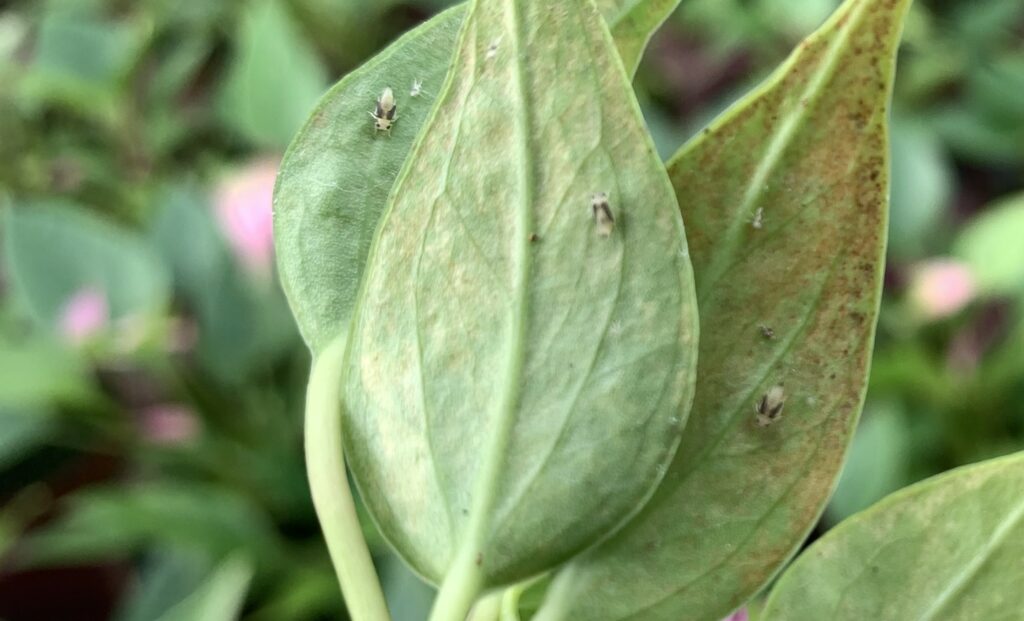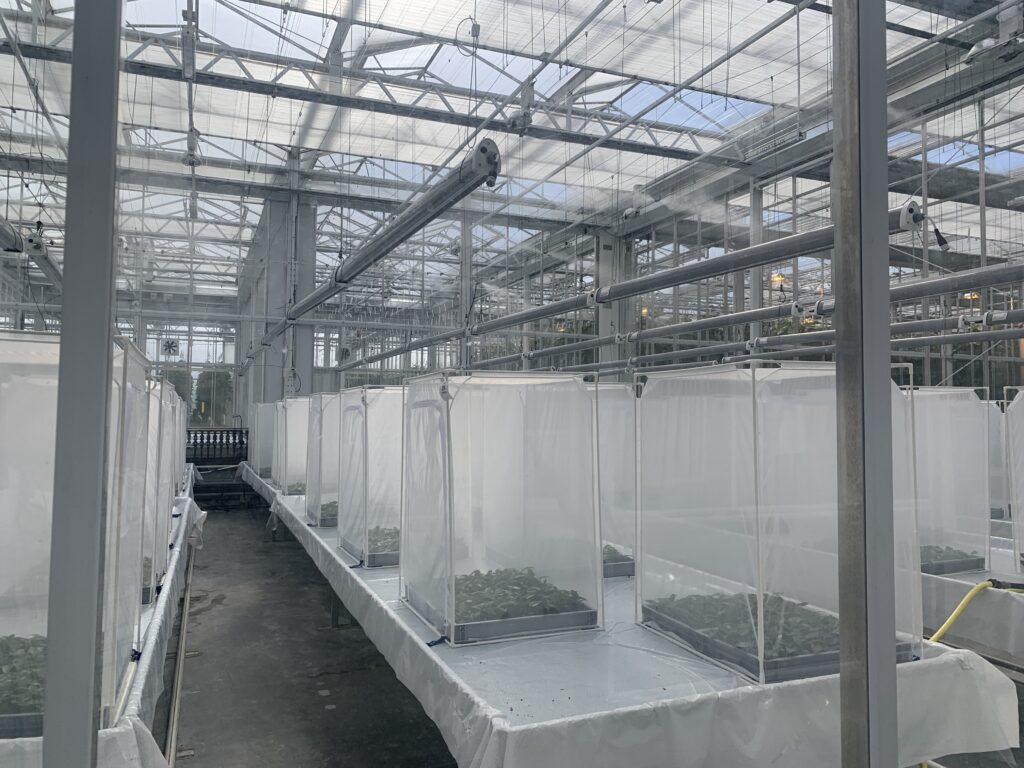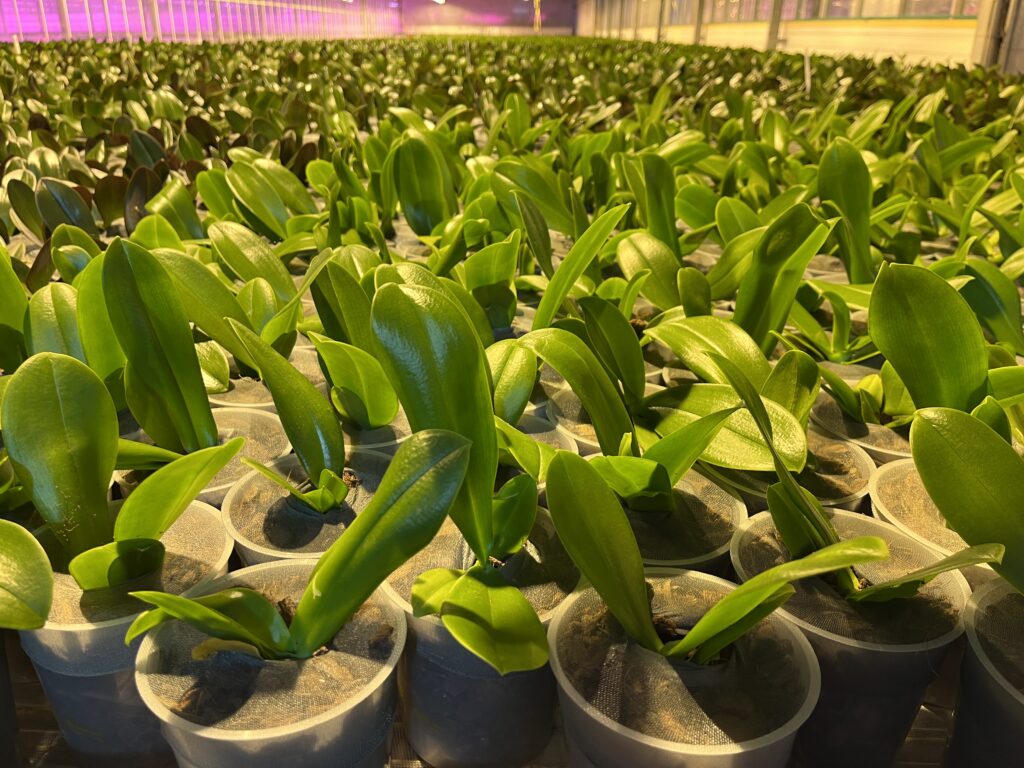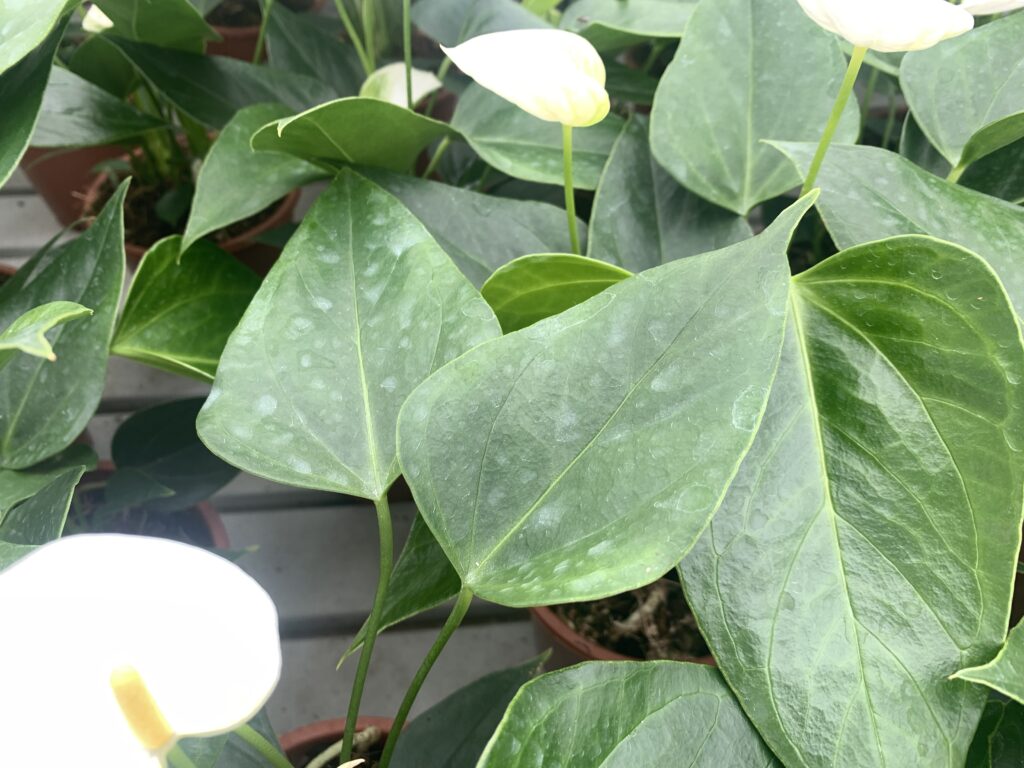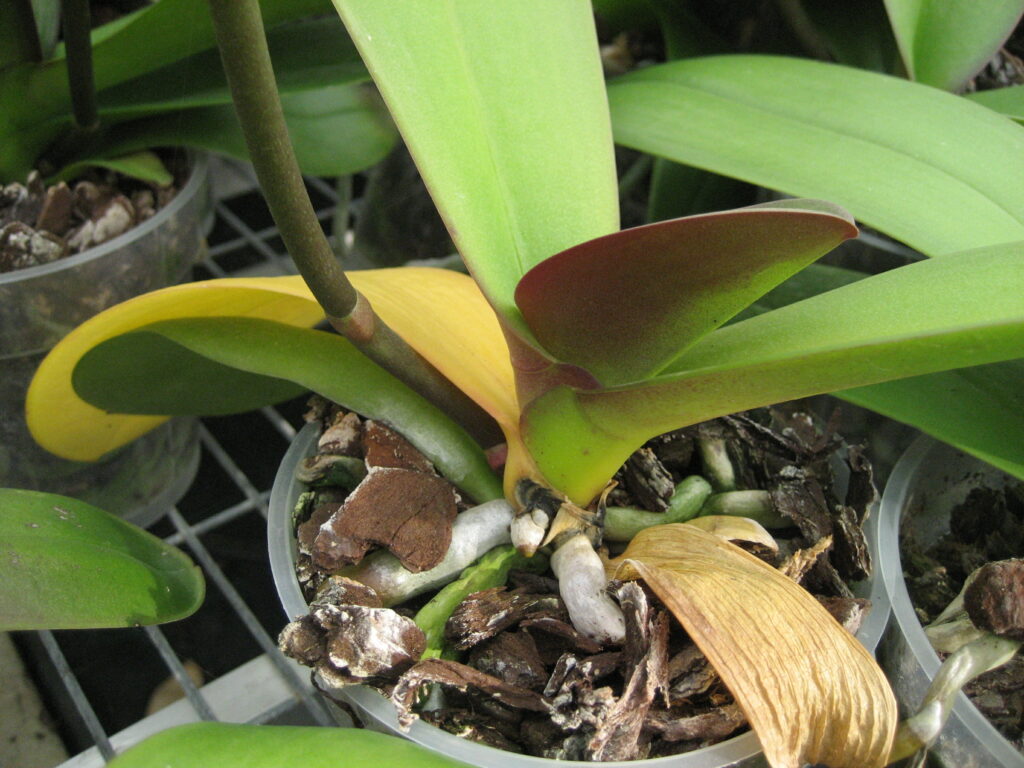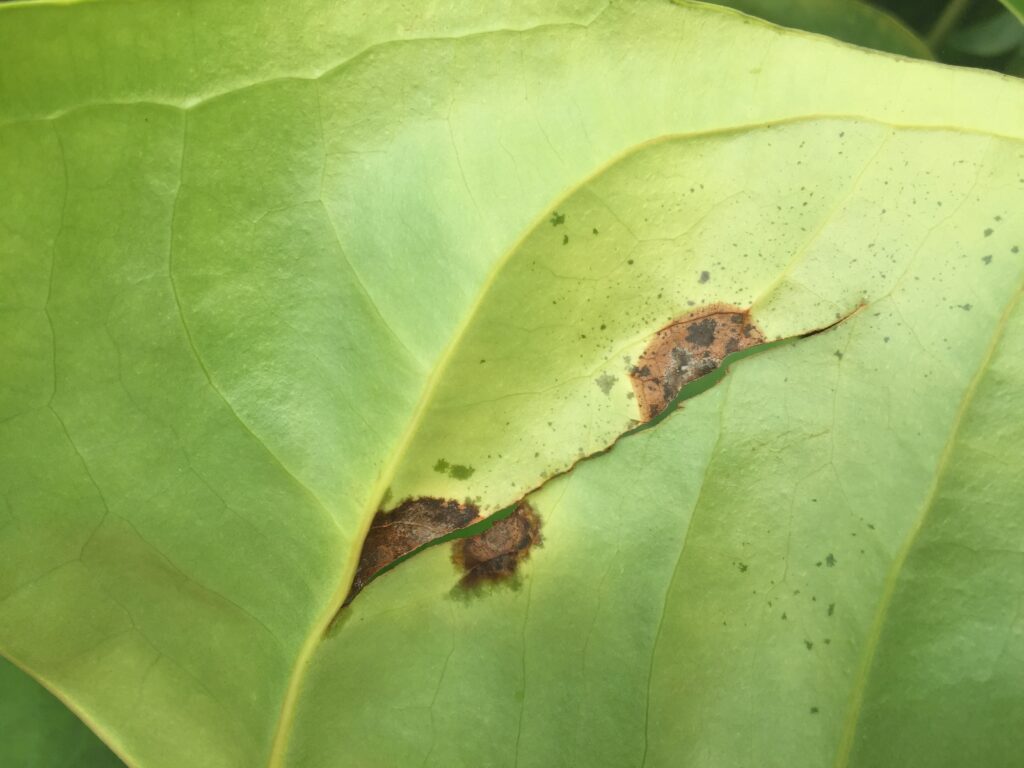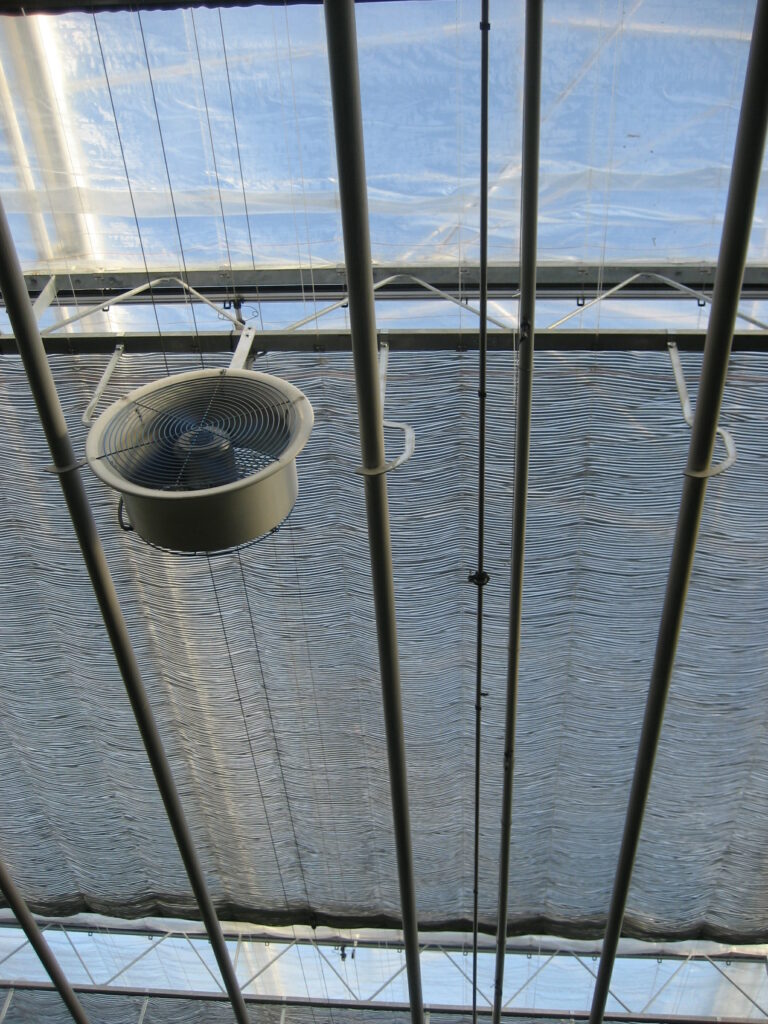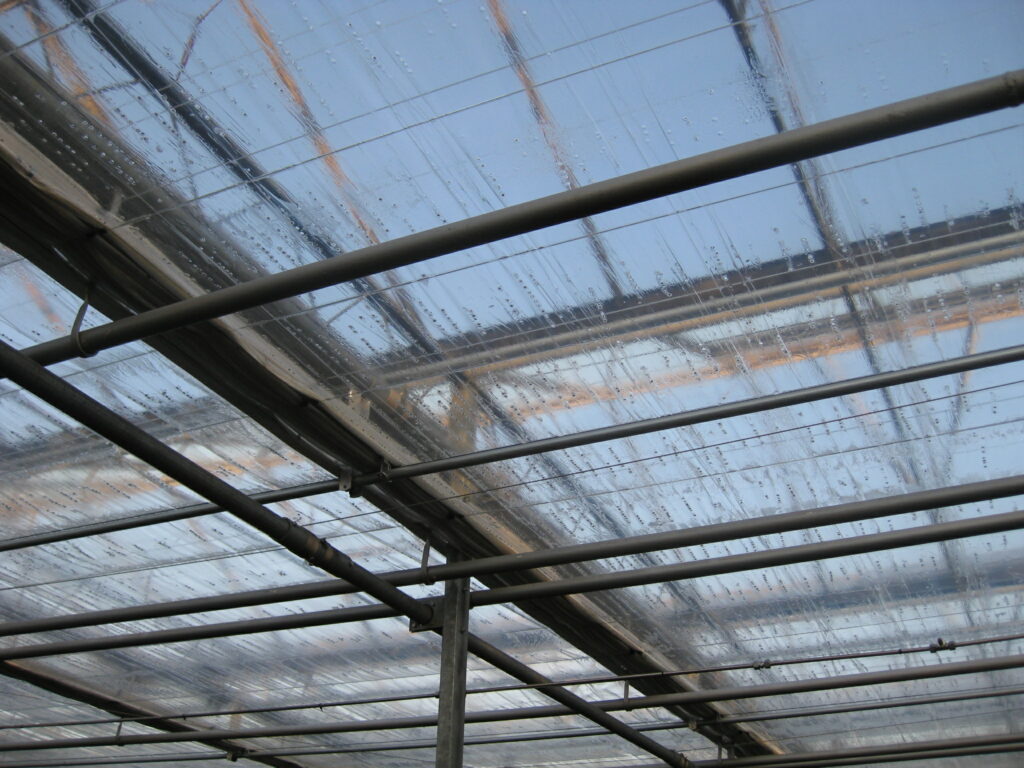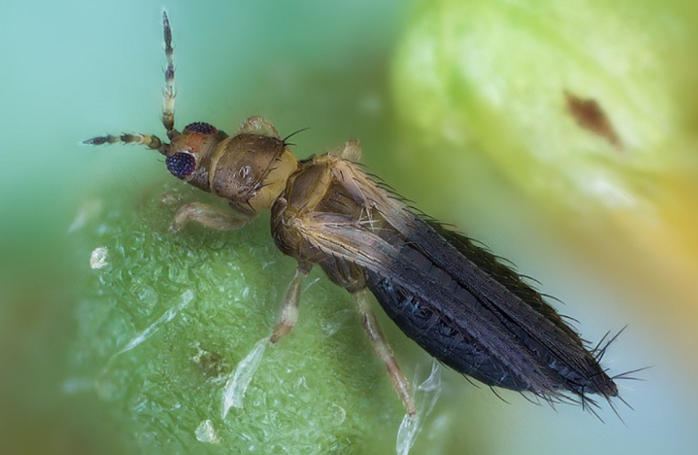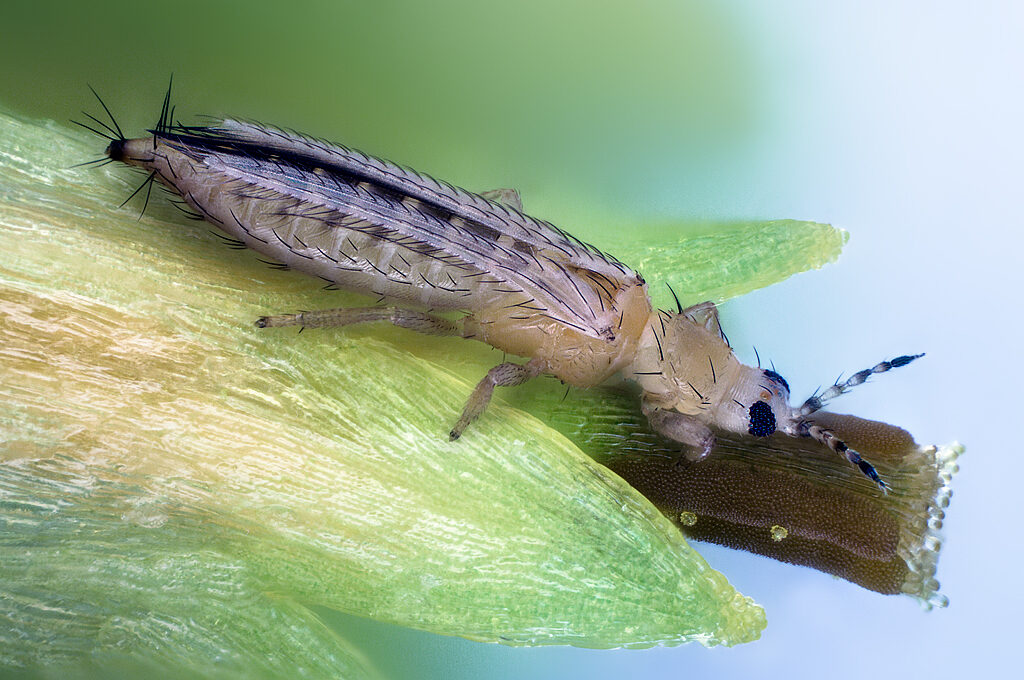Growing advice
Descriptions and cultivation advice from Anthura are based as accurately as possible on test results and practical experience. However, Anthura can in no way be held liable for damage to the crop as a result of following these recommendations. Anthura cannot guarantee that the technical cultivation advice is complete and correct and suitable for the user’s purpose. The user is responsible for assessing whether the advice is suitable for his/her own circumstances.
-
Availability of future plant protection products and alternatives for Anthurium
The use of chemical plant protection products in greenhouse horticulture has been under a magnifying glass for some time. The number of available plant protection products has been declining for years and will fall by another 40 per cent between 2023-2027. »
-
Research into ‘green’ approach to tobacco thrips
In collaboration with Koppert, Anthura has started a tobacco thrips trial at Vertify. The aim is to gain more knowledge regarding an effective, green approach to these thrips. »
-
Developments in potworm control
Since insecticides that are effective against potworm are no longer available in phalaenopsis cultivation in Holland, controlling the problem of the damage of the larvae of Lyprauta has been challenging, to say the least. »
-
Entomopathogenic fungi prove useful in controlling Parvispinus thrips
Parvispinus trips (pepertrips) vormt sinds ruim twee jaar wereldwijd regelmatig problemen in de teelt van Anthurium. De trips is aanmerkelijk lastiger te beheersen dan de andere bekende tripsen voor Anthurium zoals Californische trips of Echinotrips. Dit jaar hebben we in de praktijk goede resultaten gezien van de inzet van entomopathogene (insectenparasitaire) schimmels tegen de pepertrips. »
-
Future of crop protection Orchids
The use of chemical pesticides in greenhouse farming has been closely scrutinized for some time. The number of available crop protection products has been declining for years and will decrease by another 40% between 2023-2027. »
-
Anthurium and Xanthomonas
A very dangerous disease caused by the bacterium Xanthomonas (X) can occur in Anthurium. It usually involves the bacterium Xanthomonas phaseoli pv. Dieffenbachiae (Xpd). The Xanthomonas, which is harmful to Anthurium, can occur in many different strains (types). There are mild variants where only a limited part of the range gets affected, but there are also aggressive types that spread widely and quickly. »
-
Energy savings in Phalaenopsis
Currently, energy prices are extremely high and we do not know what lies ahead for the coming winter. It is absolutely essential that major energy savings are made to keep plant costs under control. Since greenhouse climate control is an interaction between parameters such as temperature, humidity, light and irrigation, it is important to determine a strategy whereby these aspects are still balanced if energy savings are to be made in many areas. »
-
Energy saving opportunities in Anthurium
In view of the current energy situation, the use of heating and lighting in cultivation must be minimized. This offers opportunities for Anthurium for which specific conditions must be met. The guiding principle for a healthy Anthurium crop is to avoid major fluctuations. When the balance between root and plant activity is right, a quality product can be grown in an energy-friendly way. This article discusses the factors that can be taken into consideration. »
-
Silver lining in the approach to Tobacco Thrips
Thrips causes considerable damage to plants and are difficult to control. Therefore, it is important to be alert for signs of Tobacco thrips so that prompt action can be taken. This edition focuses on the approach to Tobacco thrips (Thrips parvispinus). »
-
A more effective approach to thrips through proper identification
Identifying thrips is difficult, because both the different thrips species and the larvae are often very similar. A diagnosis is difficult, sometimes insufficiently reliable and often takes (too) long. Then the question arose for us: 'How can we do this faster and better?' We started to work on this question. »
-
Scouting a difficult newcomer: tobacco thrips
It is important to be alert to signals of tobacco thrips, so that early intervention can be taken. In this article we pay attention to identifying and scouting tobacco thrips. »

